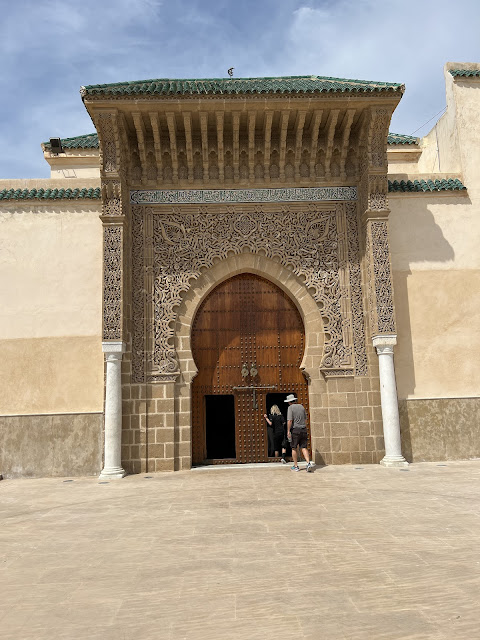Volubilis is one of the best preserved Roman cities in North Africa. It was also one of the most remote cities of the Roman Empire. It’s located between the imperial cities of Fes and Meknes. Unlike the ruins in Athens, Greece we were allowed to walk on the original stones.
 |
| Volubility is a UNESCO World Heritage site. |
 | ||||||||||||||||||||||
The life of two nomad families. In the winter when the families travel with their animals searching for food, someone stays to protect their home.
|
 | ||
The entrance to the Mausoleum of Sultan Moulay Ismail, who made the city of Meknes his capital in the 17th century.
|
 |
| This alcove is where the Inman (one who leads Muslim worshippers in prayer) prays. He prays facing the wall. The acoustics are such that everyone standing behind him can hear clearly. Again look at the exquisite mosaic tile and carvings in the wall. |
 |
| Life hasn’t changed in the countryside of Morocco |

































0 comments:
Post a Comment